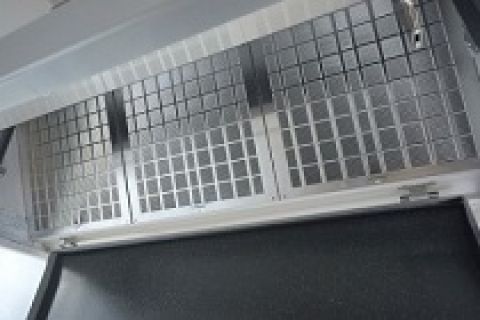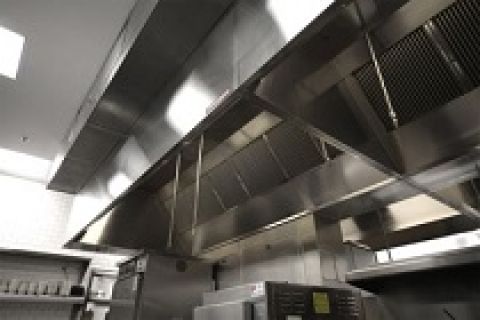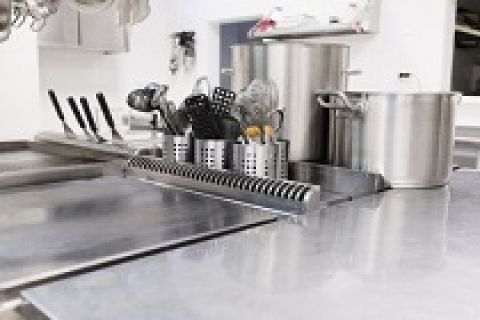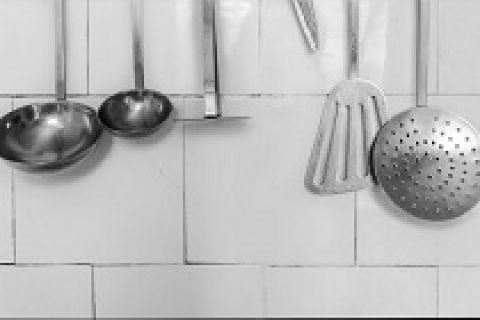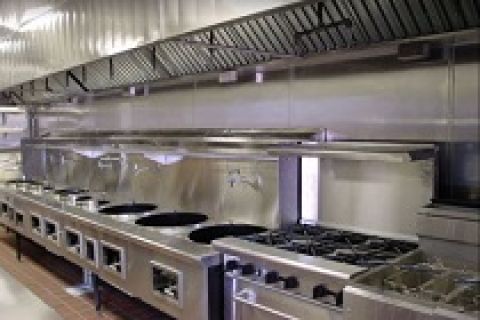A Step-by-Step Guide to Retrofitting Your Old HVAC System for Energy Efficiency
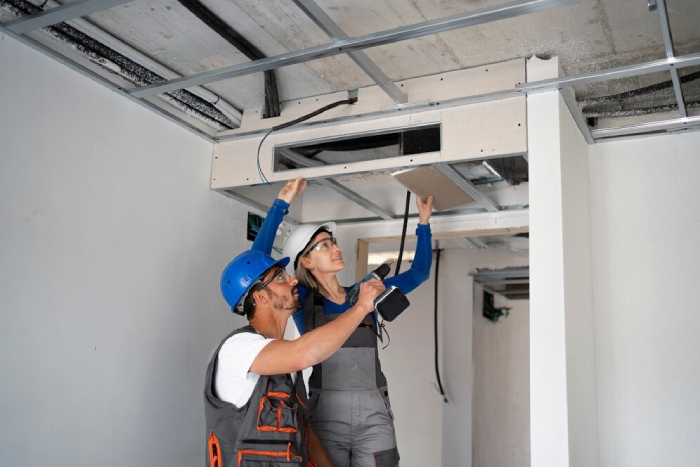
Energy efficiency is a critical factor for any restaurant, especially in a bustling environment where maintaining a safe and comfortable atmosphere for staff and customers is essential. APS-Hoods specializes in commercial HVAC retrofitting for restaurants in Denver, CO, ensuring that your system meets the latest energy standards and operates at peak efficiency.
Our expert team offers a full range of services, including:
- HVAC Retrofitting: Modernize your system to enhance performance and reduce operational costs.
- HVAC Installation: Seamlessly install new systems with minimal downtime.
- HVAC Cleaning and Maintenance: Prevent costly breakdowns and extend equipment lifespan with regular maintenance.
Get a Free Quote Today!
Call us at (800) 750-7313 to schedule a consultation and let our experts optimize your HVAC system for maximum energy savings and performance.
Why Retrofitting Your Old HVAC System Is a Smart Investment
Retrofitting your existing HVAC system is a cost-effective strategy for restaurant owners who want to enhance energy efficiency, reduce operating costs, and comply with modern building codes. In busy commercial kitchens, HVAC systems play a critical role in maintaining air quality, regulating temperature, and ensuring a safe environment for both staff and customers. However, as systems age, they tend to consume more energy and operate less efficiently.
Retrofitting involves upgrading key components of your existing system rather than replacing it entirely. This approach not only improves performance but also aligns with Denver’s stringent energy standards. By opting for an HVAC retrofit, you can:
- Extend the Lifespan of Your System: Upgrading critical components can add years of operational efficiency to your HVAC system.
- Achieve Significant Energy Savings: Enhanced system efficiency lowers energy consumption, resulting in reduced utility bills.
- Meet Updated Regulations and Codes: Retrofitting ensures compliance with Denver’s building codes and energy efficiency standards.
- Minimize Maintenance and Repair Costs: Modernized HVAC systems require fewer repairs and operate more reliably.
- Integrate Smart Technology for Better Control: Retrofitted systems can incorporate advanced controls and monitoring technologies, optimizing performance and reducing manual intervention.
For restaurant owners in Denver, retrofitting is a smart investment that not only enhances operational efficiency but also significantly reduces long-term costs.
Key Steps to Improve HVAC Performance in Older Buildings
Retrofitting an older HVAC system requires a strategic and well-planned approach to ensure optimal performance and long-term benefits. By following a systematic process, restaurant owners can successfully enhance their system’s energy efficiency while minimizing disruptions to daily operations. Here’s a step-by-step guide to help you improve HVAC performance in older buildings:
1. Conduct a Comprehensive Site Assessment
Start by evaluating your current HVAC system to identify areas that need improvement. A professional assessment will help determine whether retrofitting or upgrading specific components will deliver the best results.
2. Define Goals and Priorities
Establish clear objectives for the retrofit. Are you looking to reduce energy consumption, improve indoor air quality, meet updated building codes, or all of the above? Defining your goals will guide the selection of the most effective retrofitting solutions.
3. Select the Right Upgrades and Improvements
Identify which upgrades will have the greatest impact on your system’s efficiency. Popular retrofitting options include installing variable frequency drives (VFDs), upgrading compressors, replacing outdated controls, and adding energy management systems.
4. Plan Installation and Minimize Downtime
Schedule the retrofitting process during off-peak hours or slower business periods to minimize disruption to your restaurant operations. Consider implementing temporary ventilation solutions if necessary to maintain comfort during the transition.
5. Test and Configure New System Components
After the installation, ensure that all system components are properly tested and configured for optimal performance. This step is crucial to verify that the upgraded system meets your operational goals.
6. Train Your Staff for Optimal System Use
Educate your team on how to operate and maintain the upgraded system. Proper usage and routine maintenance are essential for maintaining the efficiency and longevity of your retrofitted HVAC system.
7. Monitor and Optimize System Performance
Continuously monitor the performance of your retrofitted system to identify areas for further optimization. Regular performance tracking helps ensure that the system operates at peak efficiency and delivers the desired energy savings.
By following these steps, restaurant owners in Denver can achieve significant energy efficiency improvements and ensure that their HVAC systems remain compliant with modern standards while maintaining a safe and comfortable environment.
Common Challenges in Retrofitting HVAC Systems and How to Overcome Them
Retrofitting an HVAC system in a commercial kitchen can bring numerous benefits, but it’s not without its challenges. From space limitations to potential downtime, these challenges can impact the success of your retrofit if not properly addressed. Fortunately, with careful planning and professional expertise, most of these obstacles can be mitigated. Here’s a closer look at the most common challenges in retrofitting HVAC systems and how to overcome them:
Limited Space Constraints
Older buildings, especially in busy restaurant environments, often have limited space available for HVAC system upgrades. Compact retrofitting solutions, such as modular HVAC units or high-efficiency systems designed for confined spaces, can help maximize performance without requiring extensive modifications to your existing infrastructure.
High Initial Costs
While retrofitting can be more cost-effective than replacing an entire system, the initial investment may still be a concern for many restaurant owners. To manage costs effectively, consider phasing the retrofit process over time. Additionally, explore available government incentives, rebates, and tax credits designed to encourage energy-efficient upgrades in Denver.
Potential Downtime and Business Disruption
One of the biggest concerns for restaurant owners is the potential downtime associated with retrofitting. To minimize disruptions, plan the retrofit during off-peak hours or schedule the work during slower business periods. Temporary ventilation solutions can also help maintain comfort levels while retrofitting is underway.
Ongoing Maintenance and System Longevity
Upgrading an HVAC system requires a proactive maintenance plan to ensure long-term efficiency and durability. Partnering with experienced HVAC professionals who offer ongoing maintenance services ensures that your retrofitted system continues to operate at peak performance and minimizes the risk of unexpected failures.
Variations in Indoor Climate Control
Inconsistent indoor climate control can affect the comfort of both staff and customers. To address this, consider integrating advanced zoning controls or variable refrigerant flow (VRF) systems, which allow for customized climate management across different areas of your restaurant.
By addressing these challenges with thoughtful planning and expert guidance, restaurant owners in Denver can successfully retrofit their HVAC systems to achieve improved energy efficiency, compliance with modern regulations, and enhanced indoor comfort.
Where to Start?
Retrofitting your HVAC system can be a strategic decision that delivers long-term energy savings, enhances indoor air quality, and ensures compliance with the latest regulations. However, determining whether retrofitting is the right choice or if a complete system upgrade would be more beneficial requires careful evaluation. For restaurant owners in Denver, making an informed decision starts with asking the right questions and consulting with experienced HVAC professionals.
Here’s how to get started:
Evaluate Your Current System’s Condition:
Assess whether your existing system is capable of being retrofitted or if it’s nearing the end of its operational life. If your system is more than 5-7 years old and showing signs of inefficiency, retrofitting may be the ideal solution.
Compare Retrofitting vs. Upgrading:
While retrofitting is often more cost-effective, in some cases, replacing an outdated system with a newer model may deliver better long-term results. Analyze the costs, benefits, and expected lifespan of both options.
Consider Potential Downtime and Disruption:
Understand how long the retrofitting process will take and plan accordingly to minimize disruption to your operations. Scheduling retrofitting during off-peak hours can help maintain business continuity.
Explore Local Rebates and Incentives:
Many government programs and energy efficiency initiatives in Denver offer rebates and financial incentives for HVAC system upgrades and retrofits. Taking advantage of these incentives can significantly offset initial costs.
To make the best decision for your restaurant, consult with the experts at APS-Hoods. Our team can assess your current system, recommend the most cost-effective solution, and guide you through the entire process. Contact us today for a free consultation and take the first step toward a more efficient and compliant HVAC system.
Frequently Asked Questions
When considering HVAC retrofitting for your restaurant, you may have several questions about the process, costs, and potential benefits. To help you make an informed decision, we’ve compiled answers to some of the most frequently asked questions about HVAC retrofitting for restaurants in Denver.
1. What Is HVAC Retrofitting?
HVAC retrofitting involves upgrading and adding advanced components to your existing system to enhance its energy efficiency and performance. Instead of replacing the entire system, retrofitting focuses on improving key elements such as compressors, controls, and ventilation systems.
2. Why Should I Retrofit My Old HVAC System?
Retrofitting is an excellent option if your system is still functional but operating inefficiently. It helps reduce energy consumption, extend the lifespan of your equipment, and ensure compliance with updated building codes in Denver.
3. Is Retrofitting More Cost-Effective Than Replacing My HVAC System?
In most cases, retrofitting is more affordable than a complete system replacement. However, the cost-effectiveness depends on the age, condition, and efficiency of your current system. If your system is beyond its useful life, a full upgrade may be more beneficial.
4. How Long Does an HVAC Retrofit Take?
The duration of an HVAC retrofit varies depending on the scope of work and the complexity of the upgrades. On average, most retrofitting projects can be completed within a few days, with minimal disruption to your restaurant’s operations.
5. Will Retrofitting Improve Indoor Air Quality?
Yes, retrofitting can significantly enhance indoor air quality by upgrading ventilation systems and introducing advanced air filtration technologies. This helps create a safer and more comfortable environment for your staff and customers.
6. What Maintenance Is Required After an HVAC Retrofit?
To maintain optimal system performance after a retrofit, regular inspections and preventive maintenance are essential. A customized maintenance plan provided by APS-Hoods ensures that your system continues to operate efficiently and meets compliance standards.
7. Can Retrofitting Help Reduce My Energy Bills?
Absolutely. Retrofitting your HVAC system reduces energy consumption by improving efficiency, leading to lower utility bills and operational costs.
8. What Are the Signs That My HVAC System Needs Retrofitting?
If your HVAC system is over five years old, frequently breaks down, or shows signs of reduced performance, it may be time to consider retrofitting. Inefficient systems often result in higher energy costs and inconsistent climate control.
For additional information or to schedule a consultation, contact APS-Hoods today and let us help you transform your HVAC system for better performance and long-term savings.
Trackback from your site.


